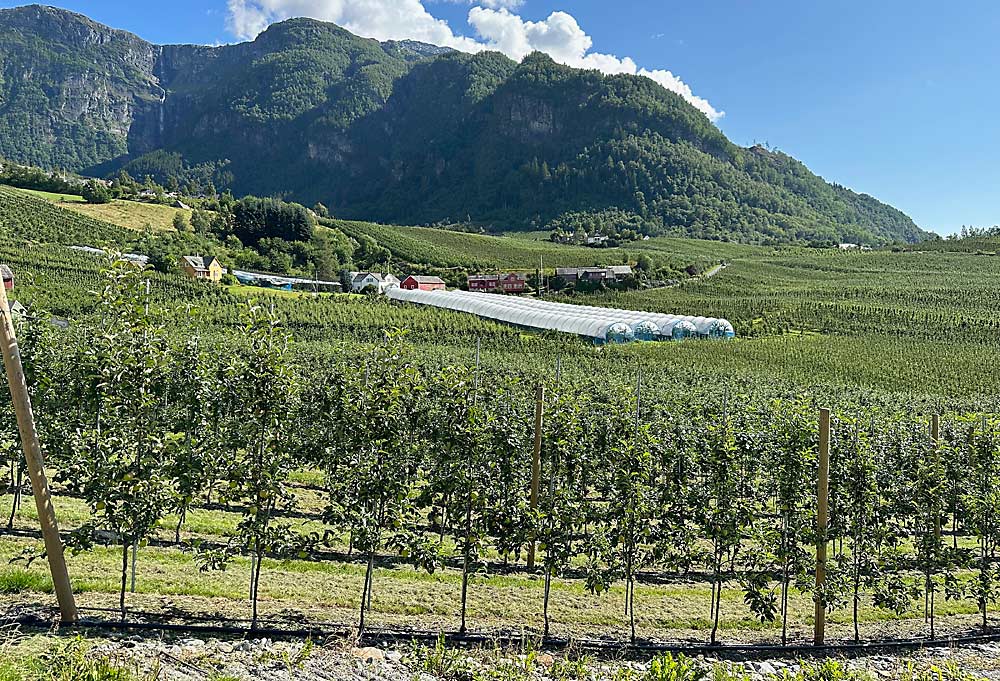
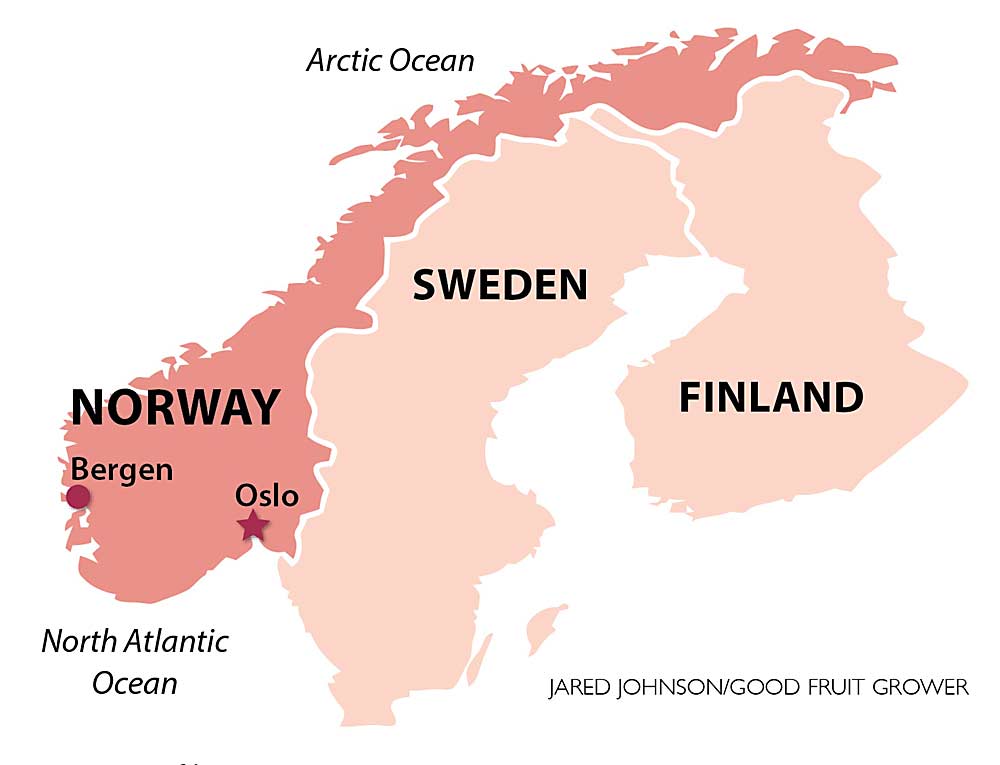
After a long and sleepy flight from North America, the descent into the Bergen airport in Norway is a wakeup call. A stunning landscape unfolds in front of our eyes. Dramatic fjords, carved over the centuries through glacial erosion, are surrounded by steep cliffs and snowcapped mountains. Communities and orchards stretch out along the sloped edges of the fjords.
Within minutes, we arrive in Bergen, a city on the western coast of Norway that has been here for over a thousand years. After collecting our bags, we exit the airport and see a huge and goofy welcome sign. It says “BERGEN?” For me, that question mark at the end is so appropriate.
It was probably added as an expression of the Norwegian sense of humor, intended to amuse (or confuse!) visitors. But for me it represents the questions I have about this fascinating region: With a landscape of mostly water, mountains and rock, how have Norwegians fed themselves over the centuries? And how can you grow apples and cherries in an area that is so close to the Arctic Circle?
All would be revealed during the nine-day “Fruit in the Fjordlands” tour with the International Fruit Tree Association. Hosted by Molly Crist of Onward Travel and IFTA education director Greg Lang of Michigan State University, we would explore Norway’s fjords and see firsthand how this magnificent but challenging landscape can bear fruit.
Swapping fish for grains: Bergen’s trading history
After settling into our hotel, our first destination was the Schøtstuene museum in Bryggen, Bergen’s most historical neighborhood and a designated UNESCO World Heritage Site. Here, lined up on Bergen’s waterfront, are the iconic and colorful wooden buildings that make this city famous. Some of these buildings hail back to the 1700s, but similar ones were on this site in the Middle Ages.
In the 14th century, merchants from Northern Europe would gather here to trade. Many of them came from towns and villages in what is now Germany. These merchants were members of the Hanseatic League, an influential trading alliance at the time. They imported much-needed grain and exported Bergen’s “stockfish,” which was locally harvested codfish dried in the open air.
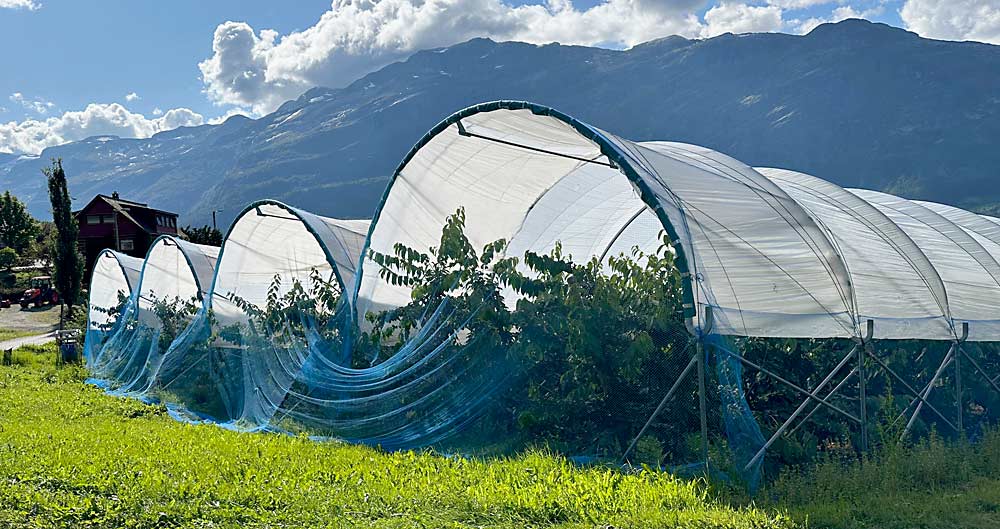
Fjord microclimates and artisan ciders in Balestrand
After leaving Bergen, our group traveled along the waterways toward Balestrand, a small town on the northern shore of the Sognefjord, which is one of the deepest fjords in Norway. On the way, we drifted past dramatic cliffs, cascading waterfalls, charming villages and remarkable orchards growing along the slopes.
It’s hard to image how any tractor could make its way up and down the rows without sliding into the fjord’s clear waters. And yet, these orchards were thriving, due to the resilience of the growers.
The first orchard and cidery we visited was Ciderhuset, established in 1922 by Andreas Eitungjerde. In those early years, Andreas’ apples were shipped to factories to make generic apple juice. But when Andreas’s grandson, Åge, took over in the 1990s, his goal was to create artisan ciders.
Ciderhuset now sells over a dozen different types of artisan ciders. He also produces nonalcoholic juices in a rainbow of colors, all made with apple juice flavored with local berries, herbs and even rhubarb.
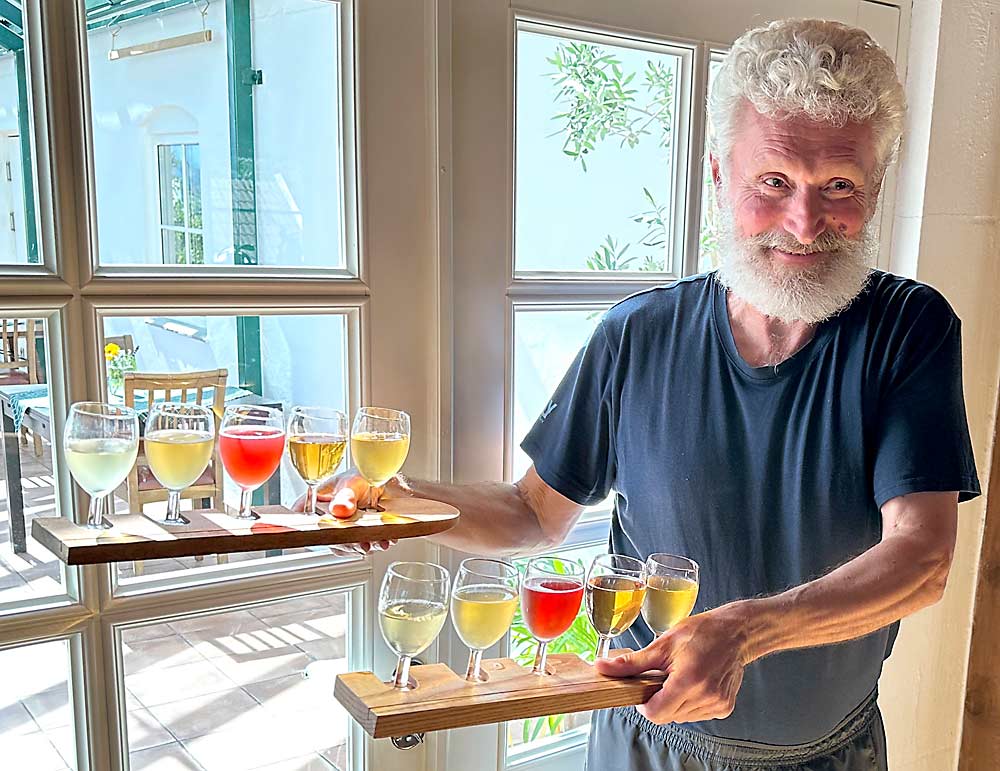
In recent years, this part of Norway has become famous for its ciders. The secret, Eitungjerde said, is the unique growing conditions. The towering mountains, together with the presence of water in the fjords below, create a microclimate where apple trees thrive. The temperature is warmer than in other parts of Norway, but the summer days never are really hot — which allows the apples to ripen slowly, giving the fruit’s acids plenty of time to develop. These acids offer a bright, fresh flavor that balances the sweetness of the fruit. The resulting juice is ideal for cidermaking.
Still, growers must work with the short growing season. They plant early or midseason apples such as the Danish heirloom variety Gravenstein (from the 1600s), a Swedish variety called Aroma (introduced in 1973), the English apple Discovery (introduced in 1962) and a Canadian cultivar named Summerred (introduced in 1964).
Norway’s undercover approach to growing cherry trees in Hardanger
From Balestrand, we moved on to the Hardanger region, which is considered the fruit bowl of Norway. Here, along the shores of the fjords, we saw many cherry orchards, all of which protected the trees under some sort of cover — from a simple tent row cover to expensive high tunnels.
During a visit to the Bioforsk Research Center, which is part of the Norwegian Institute of Bioeconomy Research, fruit crop physiology research professor Mekjell Meland explained that 100 percent of the commercial cherry orchards in Norway are covered, due to the region’s frequent and heavy rains that would otherwise cause cherry cracking and the spread of bacterial canker.
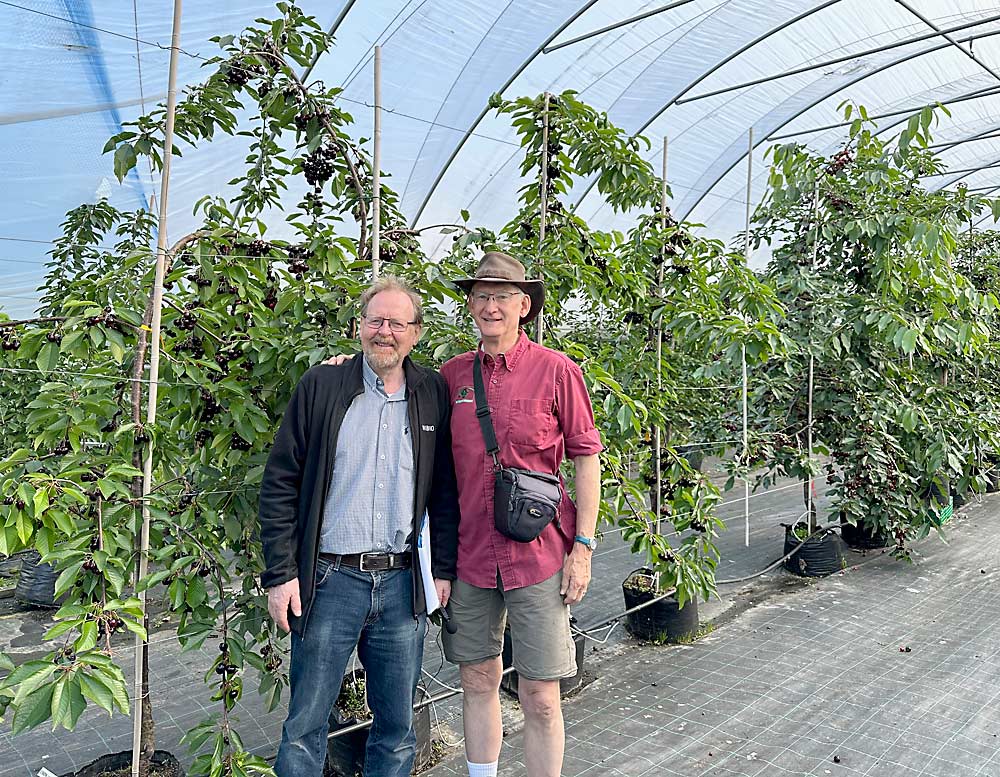
By covering cherry trees in high tunnels right after bloom, local growers can avoid these problems. According to Lang, growing cherry trees in high tunnels can be even more effective in Norway than it would be in a warmer climate.
“The high tunnels in most warm summer environments can get very hot,” he said. “But here, because they are being grown in the fjord on very steep ground, you get a chimney effect with heat rising. So, if the tunnels are open at the tops and the bottoms, you get the movement of air through the tunnel. Plus, it’s Norway, and it never gets all that hot.”
During the nine-day adventure, we met local growers, enjoyed the local cuisine and learned about this region’s history and culture. At the end of the trip, we made one more stop: the Hardanger Akvasenter, a fish farm where we learned about aquaculture and enjoyed a meal featuring the freshest salmon I have ever tasted.
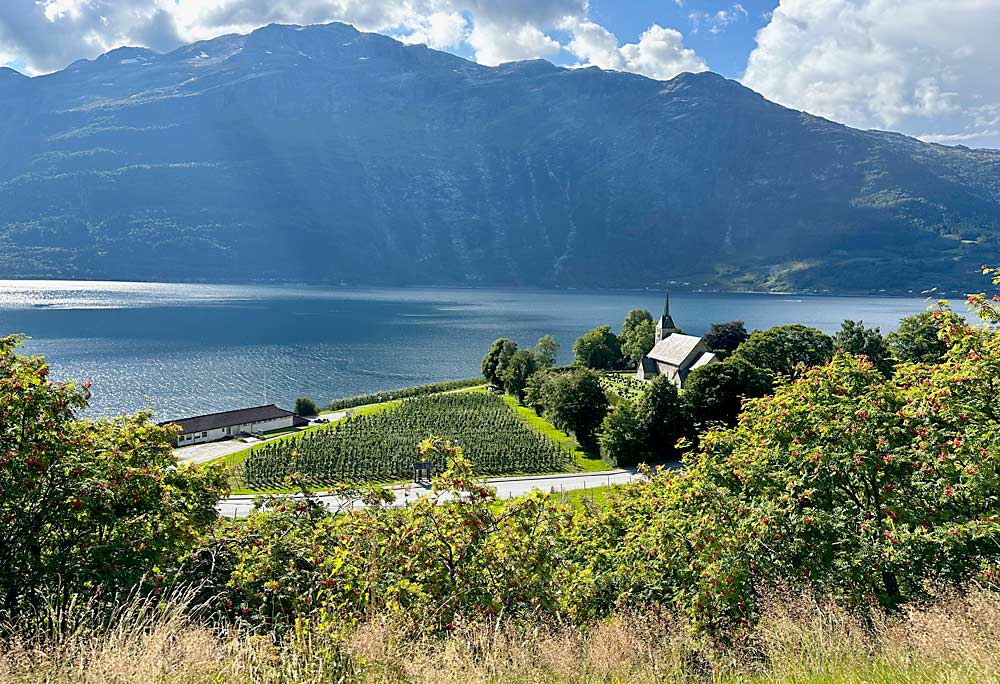
And so, the tour ended as it began, with the inhabitants of this region supplying top-quality fish to buyers far and wide. But since the 1400s, one thing has changed: Norwegians have used their creativity and resourcefulness to build up a successful fruit industry that can inspire growers from around the world.
—by Susan Poizner
Susan Poizner is creator of the award-winning fruit tree care education website OrchardPeople.com that offers articles, podcasts, online courses, books and videos on fruit tree care. She is an urban orchardist based in Toronto, Canada, and earned certification from the International Society of Arboriculture as an ISA Certified Arborist.






Leave A Comment